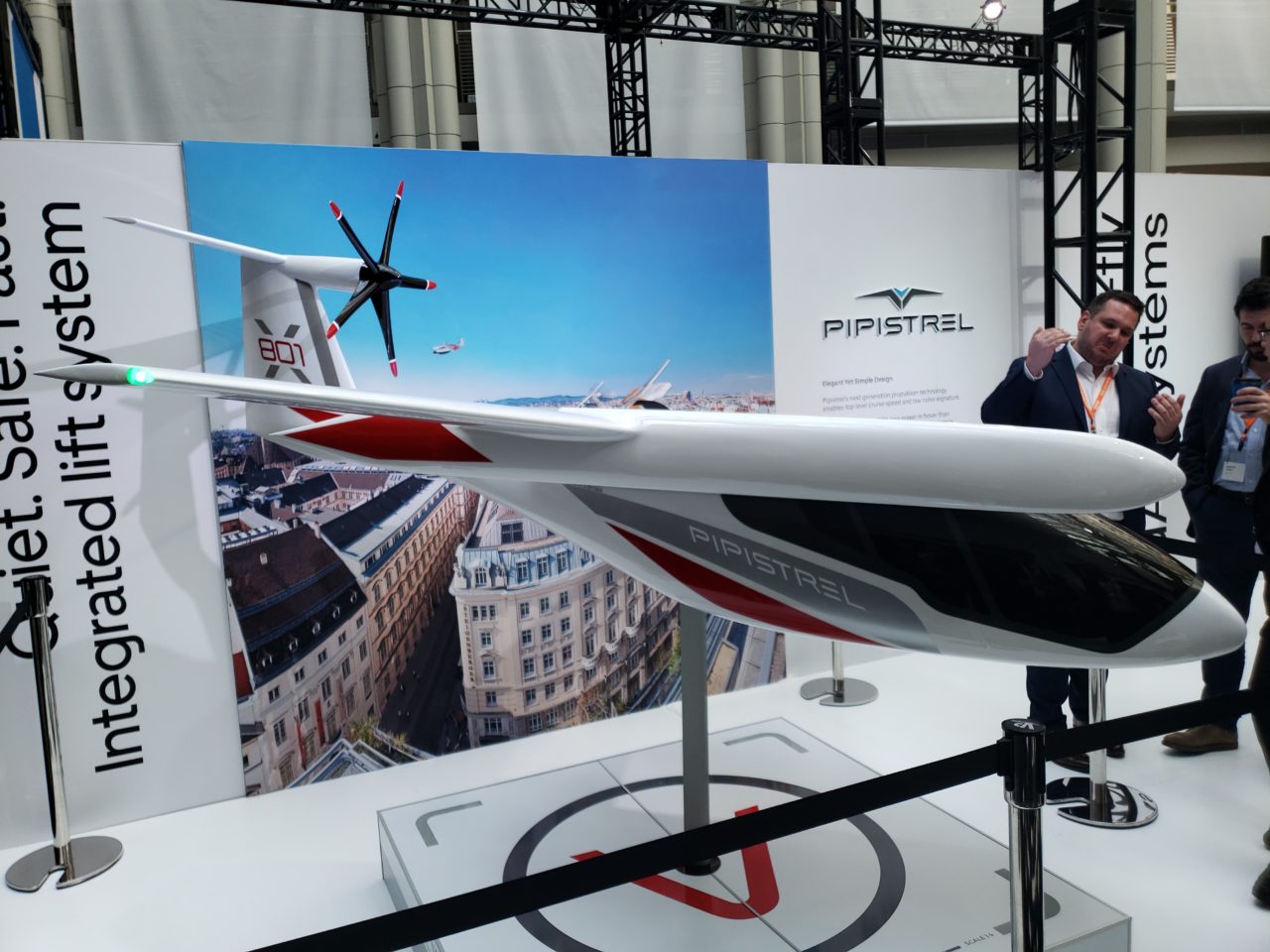
Tine Tomažič standing behind a Pipistrel 801 model at Uber’s Elevate Summit in June. (Nick Zazulia/AVI)
Where most eVTOL vehicles are designed top out in the 140-150 mph range, Pipstrel’s 801 aircraft concept will fly at better than 200 miles per hour.
“If you have the opportunity to fly fast, you have an operational advantage,” said Tine Tomažič, Pipistrel Vertical Solutions’ CEO, in a call with AVI.
Not only does more speed mean getting passengers where they’re going sooner, but it helps with traffic management and saves money, according to Tomažič. Operators want to avoid getting to the destination and then having to just tread water, circling in the air, which annoys passengers and wastes time and fuel or battery charge, he said. The idea is, if traveling 130 mph will get you there when you can land, you can go that speed the whole time. By pushing to 170 mph, the 801 could catch a sooner open spot in landing traffic before other, slower air taxis.
“We can effectively cruise between 110 and 200 mph,” he said. “The energy curve is quite flat.”
Part of the reason for Pipistrel’s comfort with its energy setup — which Tomažič is quick to point out relies exclusively on battery packs and technology they already have, not “planned future advancements” — is the company does all its own battery work. Packs of dissimilar batteries, which helps to prevent system-wide failure, are aligned two rows in what Tomažič calls a “skateboard” setup. That is, flat along the bottom, then diagonal toward the tail.
The 801 is designed with “an extremely modular structure” to allow the future addition of automation without much hassle and to make it easier to adjust the included systems as FAA and other regulators come out with specific requirements. For example, what sensors will be onboard isn’t exactly known, because it will depend on requirements.
There is a philosophical question of whether to spend more money to maximize the number of onboard sensors so the vehicle is self-sufficient and hack-resistant or offload some sensing to datalinked ground stations.
“We’ll be somewhere in the middle and more towards the case where most sensors are not on the vehicle,” Tomažič said. “This is how you can then go toward an economy of scale. Because the altimeter is an antenna, it’s a transceiver, and a datalink is something that we carry in every phone. So, you are talking about equipping the vehicle with something that is a few hundreds or thousands of dollars instead of something that lives within every mobile phone and it will simply tell the vehicle how much above the ground [it is].”

Want more eVTOL and air taxi news? Sign up for our brand new e-letter, “The Skyport,” where every other week you’ll find the most important analysis and insider scoops from the urban air mobility world.
There are regulatory hurdles with that strategy, Tomažič said. Pipistrel has “faced very interesting and not always positive responses just because it is very different from how our airplanes and helicopters are today,” he said.
Offloading too much sensing to a centralized location increases the risk of a lost connection. The UAM market is relying on the proliferation of a high-bandwidth, reliable 5G signal, but there has to be enough onboard sensing capability that the vehicle can still safely operate if that signal hiccups or goes down.
While Tomažič thinks it’s important to keep things flexible for the time being, Honeywell will be doing most of its own avionics for the 801. The supplier will provide the necessary onboard sensors used for detect-and-avoid and landing as well as connectivity systems, navigation and fly-by-wire and flight controls. Tomažič described the simplified flight control interface as something similar to a camera drone’s remote controls, requiring operators to tell the vehicle where to move but not how to pitch and roll.
Currently, Pipistrel is flying a fleet of scale models, the largest of which is almost fifteen feet. The company plans to have a full-sized version in the air test flying by the end of the year, Tomažič said, after which it will aim for EASA type certification. The entry-into-service goal sits at 2025.